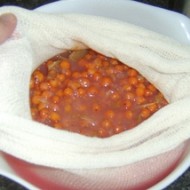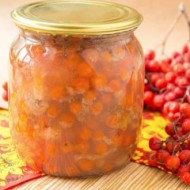Cooking technology and 8 best recipes for homemade rowan wine
Content
Features of the preparation of berries
Berries for making wine must be picked in the fall, after the first frost. During this time, they become softer and less bitter. If it is not possible to wait for a cold snap, the harvested berries can be kept in the freezer for 5–6 o'clock. Better to leave them overnight. This will help get rid of the bitter taste. In addition, freezing will destroy tannins, which will make the color of the product brighter and more saturated.

It is better to pick berries in a summer cottage or in a forest, away from roads and highways. Large berries without skin damage are best suited for wine. After sorting, they are washed in cool water and allowed to dry. During this time, you can prepare the dishes and other ingredients.
Video «Rowan wine»
From this video you will learn about the secrets of making mountain ash wine.
The best recipes for rowan wine
It is not difficult to make rowan wine, as the berries can be found in the forest, in gardens and even in city flower beds. The rest of the ingredients are always simple, accessible, and inexpensive.
The classic recipe for red rowan wine
The traditional recipe contains only four ingredients. To cook 10 kg of rowan, you need 3–4 kg of sugar and 4–5 liters of water. To speed up the fermentation, add about 200 g of unwashed raisins.
Berries must be poured twice with boiling water and let them brew for 20–30 minutes. This will help get rid of unwanted substances. After that, the mountain ash must be crushed with a rolling pin or sieve. You can also do this manually. In this case, your hands should be clean and dry. Better to use a large bowl. Juice is squeezed out of the resulting raw material through cheesecloth.
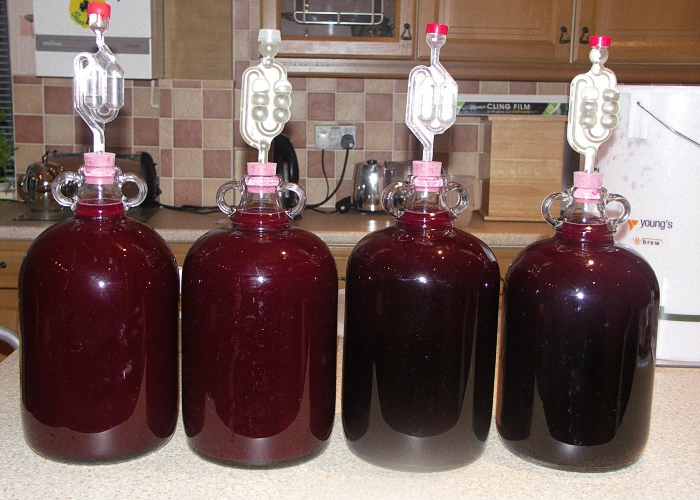
The pulp is poured with hot, but not boiling water. Its temperature should not exceed 80 ° C. After cooling down, the previously squeezed juice, 2 kg of sugar and raisins are added there. The resulting composition is mixed and poured into glass jars or placed in a saucepan. Cover the neck with a clean cloth and tie. They are sent to a dark, cool place and mixed several times a day. Fermentation should start in 4–7 days.
When foam and a characteristic odor appear, the wort is filtered through cheesecloth, mixed with the remaining sugar and a water seal is installed. It can be replaced with a medical glove worn over the neck. The solution must be left at 1–2 months. When fermentation is over, the wine must be poured into clean bottles and the lids must be screwed on tightly. Care must be taken to ensure that the sediment remains in the previous container when pouring. It can spoil the taste of the finished product.
Homemade chokeberry wine
The process of making an aronia drink is similar to the classic recipe. However, the drink is richer.
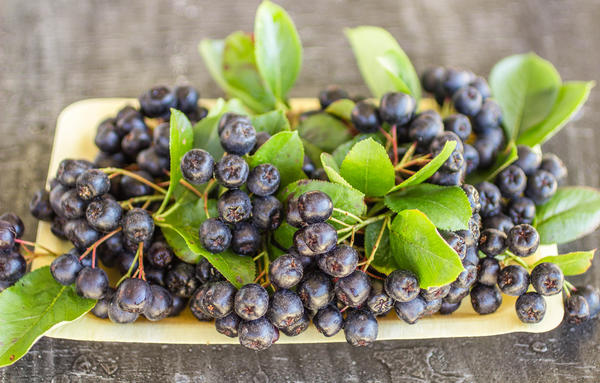
10 kg of berries require only 2 kg of sugar and 2 liters of water.Unwashed grapes can be used instead of raisins.
Mash the berries with your hands and add 500–700 g sugar. The container is tied with gauze or cloth and placed in a dark place. The solution must be stirred several times a day. When foam appears, the pulp needs to be collected and the juice filtered. A water seal must be installed on the container. After 4–The young wine will be ready for 8 weeks. It needs to be bottled and sent to a dark place to ripen. It lasts from several months to 4–5 years depending on storage conditions.
Dessert wine
Dessert wine has a high sugar content. It is stronger and lasts longer.
To prepare it, you need 5–6 kg of sugar per 10 kg of mountain ash. As in the traditional recipe, add 2 kg of sugar to the crushed berries and mix thoroughly.
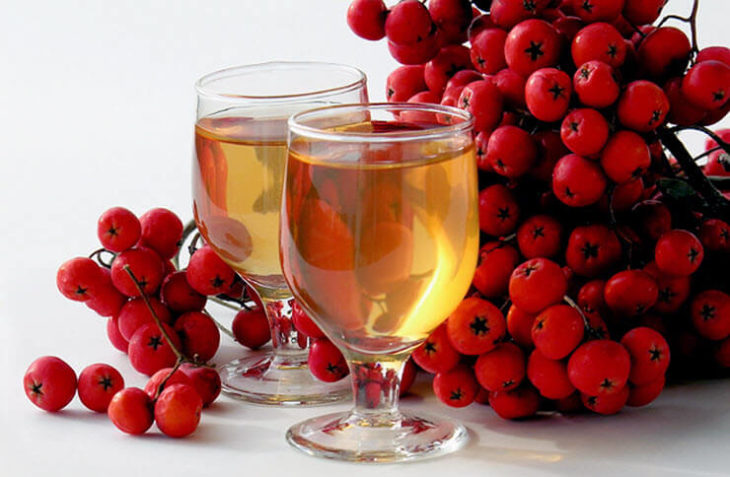
After the start of fermentation, add another 300–400 g. Thus, a week before installing the water seal, add 2–2.5 kg. The remaining sugar is added after filtering the wort. As a rule, alcohol is not added to dessert drinks.
Fortified wine
Fortified wine contains more alcohol than other types of wine. Their strength ranges from 15 to 22%. Homemade drinks can be as high as 28–30% alcohol content.
After the beginning of fermentation and straining of the pulp, edible alcohol or vodka is added to the young drink. The liquid must be of good quality, as it affects the taste of the wine. For 10 kg of berries you need 700–1000 g of vodka or 400–500 ml of edible alcohol.
In no case should medical alcohol be used for fastening.
In order for the taste of the fortified product to be soft and pleasant, after the addition of alcohol, the wine must be infused longer than other varieties of the drink. You can consume it after 7-8 months.
With apple juice
Apple juice goes well with a tart mountain ash flavor. The drink acquires sweet and sour notes and the smell of ripe apples. To prepare such a wine, you need to take 2 liters of juice and 2 liters of water for 10 kg of berries. The amount of sugar and raisins does not change.

Also, an apple-mountain ash drink can be prepared in a ratio of 2 kg of mountain ash to 1 kg of apple pulp passed through a press. The ingredients are mixed, sprinkled with sugar and sent to a dark place. In 1–For 2 weeks, the pulp is filtered to get juice. It is sent under a water seal, and the pulp is again infused to re-obtain the liquid.
Cinnamon
Cinnamon emphasizes the flavor of the berries and softens their astringency. It is added to the drink just before it is sent to infuse. For 1 liter add 10–20 grams of cinnamon. After that you need to wait 3–4 months. After that, the wine will become strong enough, and the natural flavor of the berries will mix with the flavor of spices.
With raisins
Raisins accelerate the fermentation process. But in this amount, it does not affect the taste of the product. In order for the flavor of dried grapes to be expressed, you need to add from 700 g to 1 kg of raisins. It does not need to be washed, but you can grind it a little with a knife.
With grapes
Adding rowan juice to traditional grape wine will add tart notes and a light aroma of wild berries to the classic taste. Winemakers consider the ideal ratio of 7 kg blackberry to 3 kg of white grapes. Rowan adds astringency to the drink, while grapes add sweetness.
During cooking, the berries must be kneaded separately. The stalks, leaves and twigs must be removed. Raw materials must be of high quality and juicy. After that, they need to be mixed in one container and mixed thoroughly until a homogeneous mixture. The further cooking process repeats the classic recipe.
Red grapes will allow you to achieve an unusual dark amber color of the drink and a sweetish taste with a slight bitterness.
Storage rules for homemade rowan wine
The longer the homemade rowan wine is stored, the tastier and richer it becomes. Bitterness disappears, a sweetish tart aftertaste appears. In addition, in this way, its strength increases.
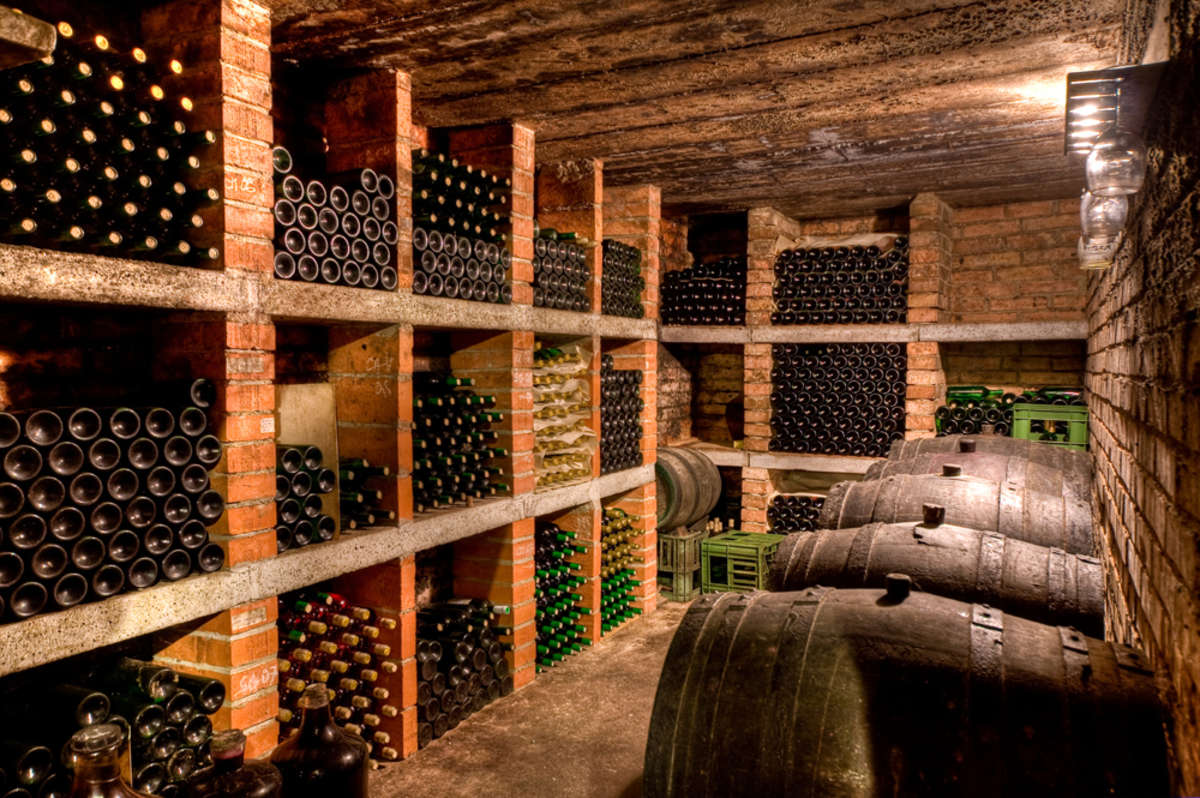
Rowan alcoholic drink is stored in a dark place at a temperature of 15 to 18 ° C. A cellar or basement is best suited for this. It is best to pour it into glass bottles and store it horizontally. In the first year of storage, it will be darker, and more pronounced bitterness will be present in the taste. But the second year the wine will become lighter, a sweet aftertaste will appear.
Rowan wine is a rare drink with an unusual taste and aroma. It has medicinal properties, reduces blood pressure, eliminates joint pain. It goes well with meat dishes, barbecue, ham. If properly prepared, such wine will become a table decoration for holidays and special occasions.


